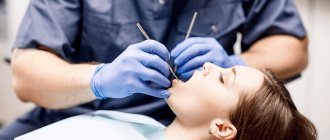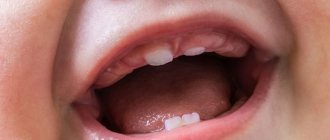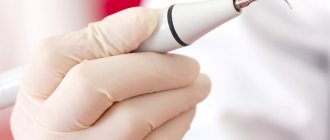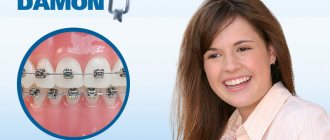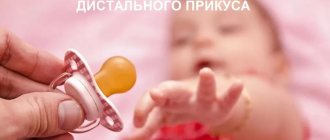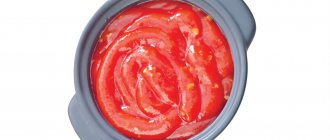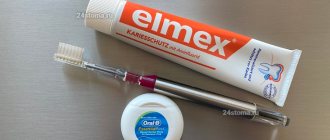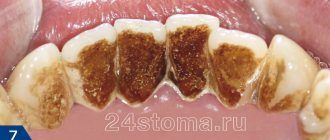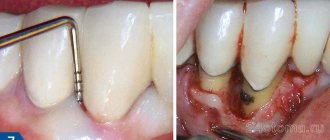Primary self-help
But sometimes a tooth reminds itself suddenly: on the road, on vacation, late in the evening, when there is no immediate opportunity to see a doctor, nor the strength to endure any longer. In such a situation, you can use tips for quickly combating toothache:
- Rinsing. Warm rinsing helps clean the aching tooth from pieces of food, plaque and bacteria. The most effective recipes: a solution of soda or salt, a few drops of iodine or a furatsilin tablet in a glass of water, a light pink solution of potassium permanganate. Infusions of herbs also help well: chamomile, peppermint, sage, calendula, calamus, individually or in a mixture. You need to rinse every time after eating, as well as every hour. You can also make baths from infusions of these herbs for 15-20 minutes.
- Dental floss. You can try to gently clean the interdental space while the pain subsides using dental floss.
- Clove oil. A drop of this oil should be applied to the aching tooth using an ear stick.
- Strong alcohol . If there are no contraindications, you can rinse your mouth with vodka, whiskey, cognac or any other strong alcohol. The gums will absorb some of the alcohol, which will dull the pain.
- Painkiller. You can take any over-the-counter painkiller according to the regimen indicated in the annotation.
- Massage. You can try for 3-5 minutes to massage the area between the index and thumb on the side of the diseased tooth or the top of the auricle.
These steps will help ease the pain enough to allow you to wait until dental clinics open.
It is important to remember that neither these nor any other express methods will get rid of the cause, so without a visit to the dentist, the tooth will remind itself again and again.
Causes
The cause of pain in the teeth can be both dental and non-dental reasons.
Dental include:
- caries or its more severe form pulpitis;
- gingivitis or periodontitis, when the gums or tissue around the tooth root become inflamed;
- periostitis, in which rotting of the alveolar processes occurs in the upper or lower jaw;
- postoperative complications or errors during filling.
Also, toothache can be a concomitant symptom of other diseases, for example:
- migraine and other types of headaches;
- maxillofacial neuralgia, including inflammation of the trigeminal nerve;
- diseases of the ENT organs;
- oncology;
- disruptions in the functioning of the cardiovascular system.
Attention! Only a dentist can determine the exact diagnosis. At home, you can only try to get rid of toothache, easing your condition before visiting a doctor.
What not to do
There is a lot of “harmful” advice that will only worsen the situation. So, what not to do:
- Do not heat. Under no circumstances apply heating pads, scarves, compresses, warming tampons, etc. to a sore tooth.
- Do not apply tablets. You can often come across advice to put an aspirin tablet on a sore tooth, but this can only cause a chemical burn.
- Do not take antibiotics. In the treatment of certain dental diseases, doctors often use antibiotics. But only a specialist can develop an effective and correct regimen for taking them.
Why does tartar form on teeth?
There is always a certain amount of bacteria present in the oral cavity. This is fine. Moreover, bacteria help in digestion by starting the process of decomposition of food already during chewing.
Bacteria are found on the surface of all oral tissues, including teeth. The latter are protected from the harmful effects of microorganisms by enamel. Bacteria cannot penetrate through it.
But, nevertheless, nothing prevents bacteria from accumulating on the surface of the enamel. This biofilm is easily removed with everyday hygiene - brushing, flossing and irrigating. But in some cases - for example, due to untimely removal - the plaque begins to thicken. The reasons for this are:
- Excessive consumption of sweet foods, sugar, foods high in carbohydrates. All this creates a breeding ground for microorganisms;
- Use of low-quality hygiene products, untimely cleaning;
- Smoking. Tobacco smoke destroys the structure of the enamel, forming roughness, cavities and cavities on its surface;
- Irregularity of the dentition, malocclusion;
- Diseases of the digestive system, hereditary predisposition.
Bacterial plaque is easily removed. However, at some point it begins to petrify – that is, to become denser and acquire a mineral structure. And turns into tartar.
Tartar can no longer be removed with everyday hygiene products. It cannot be brushed or flossed off, and even a waterpik cannot destroy it. At the same time, bacteria in this colony continue to destroy both the tooth and the soft tissue located next to it. As a result, itching, swelling, bleeding begins, and increased sensitivity appears.
What do we have to do
After the removal procedure, you need to limit your activity for a while, adhere to a healthy lifestyle and diet.
It is better to take the so-called “sick leave” - spend time at home in a calm environment, closely monitoring your condition.
Smoking and drinking alcoholic beverages are prohibited; it is better to abstain from them.
The menu for the recovery period should consist of nutritious food that does not require thorough chewing. It is better to reduce the number of meals by increasing the calorie content of dishes.
It is imperative to carry out hygienic procedures, since ignoring them can trigger an inflammatory process in the socket of an extracted tooth.
Mouth rinsing is prohibited; it is better to replace it with medicinal baths.
You need to make sure that the postoperative sutures do not come apart; to do this, you should not open your mouth wide or strain your facial muscles.
Baths after tooth extraction
Since rinsing after the removal procedure is prohibited, it is necessary to make baths.
Doctors usually recommend making baths using soda and salt, medications or decoctions of various medicinal herbs. For these purposes, drugs such as Miramistin and an aqueous solution of Chlorhexidine are suitable.
The procedure is easy to carry out. You just need to put a small amount of bath liquid in your mouth, tilt your head so that the liquid moves to the area of the pulled out tooth, and freeze in this position for 30-60 seconds. There is no need to take any active action; the medicinal solution should simply gently wash the damaged gum tissue. After this, the liquid must be spat out.
Antiseptic or therapeutic baths are recommended to be done every 3 hours during the day, preferably after eating and cleansing the mouth.
After the patient has taken a bath, it is advisable not to eat any food or even drink for 1 hour.
Professional tartar removal
The most modern, effective and gentle way to remove tartar is ultrasonic cleaning. It is carried out in dental clinics. Hygienists or periodontists specialize in such procedures.
Before performing ultrasonic dental tartar removal, the doctor, guided by the main medical principle “Do no harm!”, assesses the condition of the patient’s oral cavity. Determines whether there are any contraindications. Selects a suitable nozzle for the ultrasonic cleaning device.
During ultrasonic exposure, the structure of the mineral plaque is destroyed. And in most cases this happens from within. Tartar simply falls off the surface of the enamel, falls out of periodontal pockets and interdental spaces.
After this, the enamel is polished. This is necessary in order to prevent the appearance of plaque for a long time. The result is not only noticeable - it is literally tangible. You can run your tongue over the surface of the enamel - it will be clean, smooth and tactilely pleasant.
If tartar has penetrated deep into periodontal pockets or has damaged the integrity of the enamel, causing increased sensitivity, the dentist can also use local anesthesia. This is necessary to make the procedure comfortable and painless for the patient.
Prevention
These rules should be followed by all people who experience pain in the left lower abdomen:
- control your stress and its level. To do this, you should meditate and do stretching exercises. Very often, stomach problems arise due to stress. Stretching, meditation will relax the body, mind, reduce pain in the left abdomen;
- Exercise regularly if your stomach hurts on the lower right side. Thanks to constant exercise, constipation is prevented and metabolism is accelerated. In addition, sport helps strengthen the digestive tract, cleanse the intestines, and ensure efficient functioning of the stomach;
- fill out a food diary. Write down all the dishes you ate throughout the day there. This will help you understand why your stomach hurts. You can prescribe your diet for a week, and it is important to indicate even the amount of food consumed. You should also write down your feelings during abdominal pain in your diary (the nature of the pain, their duration);
- watch your weight. Just because you're overweight and not much of it, doesn't mean you can forget about heartburn. Scientists say that the layer of fat puts pressure on the stomach, causing gastric juice to rise into the esophagus, and this guarantees heartburn;
- drink more water if your stomach hurts (about 2.2 liters). To have regular bowel movements and digest food, you need to drink enough liquid. Otherwise, hemorrhoids, polyps, and painful constipation are possible;
- get plenty of rest. If there is a stomach virus in the body, then you should be at peace and have strength. In the case of acid reflux, lack of adequate sleep can lead to serious consequences.
What happens if you ignore warning signs?
If inflammation is not eliminated, over time the pathological process will destroy bone tissue, which will lead to loss of teeth. In addition, pus accumulated in soft tissues can enter the intermuscular space or subcutaneous area. This can lead to melting of nearby tissues, requiring the intervention of an oral and maxillofacial surgeon.
It is difficult to treat a prosthetic tooth; this will require unfilling the canals, conducting anti-inflammatory therapy, and filling the canals again. If the inflammation has affected the root apex, surgical intervention will be required - resection of the apex along with the granuloma or cyst.
The doctor decides how to relieve pain under the crown individually in each clinical situation, based on the cause, stage, and extent of inflammation. Sometimes the situation goes so far that the only effective treatment method is the removal of a tooth followed by prosthetics.
What to do after wisdom tooth removal
The third molar is usually pulled out due to inflammation that appears around it. At the same time, pus and infectious agents are likely to get into the wound. Therefore, in the postoperative period, the patient must follow general recommendations, as well as be as attentive as possible to his feelings, and note the slightest changes in his condition.
As soon as the hole stops bleeding, you should immediately remove the compression tampon. Its presence in the wound provokes the proliferation of bacteria and increases the likelihood of the onset of an inflammatory process.
The patient should be prepared for the fact that his gums will hurt for 3-5 days after the procedure. You need to purchase recommended anesthetics and take them on schedule. If the pain syndrome has become stronger, swelling of the face and gums increases over the course of several days, the elevated temperature does not subside, and an unpleasant odor begins to come from the socket, you need to call the dentist.
Advantages of visiting Dr. Martin dentistry
The network of dental clinics "Doctor Martin" was awarded the honorary title of dentistry with European quality of treatment. Despite this, the pricing policy is loyal, the cost of the services provided is affordable, discounts and special offers are regularly held (more details on the price list can be found on the website). Every patient is guaranteed free consultations.
To make an appointment with a specialist, you can contact the administrator at the numbers provided or leave a request on the website. At the initial appointment, the doctor will collect an anamnesis, conduct an examination,, if necessary, prescribe a diagnosis and tell you how to save a loose tooth in a particular case. Thanks to the extensive experience and highly qualified specialists, it is possible to cope with even advanced clinical situations. Don't delay, make an appointment right now!
Treatment of periostitis with physical factors
The complex approach to the treatment of periostitis is complemented by the use of therapeutic physical factors:
- ultra-high-frequency therapy (an electromagnetic field, or UHF, acts as a therapeutic factor in inflammatory processes);
- magnetic applicators (magnetotherapeutic treatment of inflammatory processes);
- medicinal electrophoresis (using an electric current of low voltage and low strength, a medicinal substance is introduced into the body as an additional therapeutic factor);
- helium-neon laser rays (have anti-inflammatory, bactericidal, regenerative effects).
Temperature rises after tooth extraction
A slight increase in general body temperature or local temperature in the area of the operation is considered normal. This is the body's natural reaction to dental surgery.
If the temperature stays within 37-38° C, there is no need to bring it down. If it rises above 38° C, you need to take antipyretic drugs. Avoid using aspirin as it may cause bleeding from the socket.
An increase in temperature over a long period (2 or more days in a row), accompanied by signs of inflammation - severe pain, swelling, swelling of soft tissues, an unpleasant odor from the wound, are direct indications for urgent medical attention.
How to avoid tartar formation
Tartar prevention is a simple and affordable procedure. It will help protect not only from mineral plaque, but also from other dental diseases. To avoid the appearance of tartar, you must:
- Brush your teeth regularly. Twice a day, morning and evening, 2-3 minutes. You shouldn’t lean on the toothbrush so as not to scratch the enamel, but you shouldn’t move it like a feather either. Select the optimal pressing force;
- Use a variety of oral hygiene products. Flosses will help remove mineral plaque from the interdental spaces, irrigators - from periodontal (gum) pockets, rinses - get rid of harmful microorganisms;
- Use quality home hygiene products. Don’t skimp on toothpaste—dentist services can still cost more than the 50-100 rubles you managed to save;
- Eat 4-6 times a day, but little by little. You should not snack every few tens of minutes, especially snacks like chips, cookies or candy;
- Make it a habit to rinse your mouth with water after every meal. This will help wash away microorganisms, bacterial plaque and food particles;
- Eat more solid, healthy foods. For example, snack on carrots and apples. But you should refuse soft and high-calorie foods (cookies, cakes, etc.);
- Visit your dentist regularly.
These tips will help protect not only from tartar, but also from other dental problems. They will also have a positive effect on the gastrointestinal tract. This means that the rest of the body will say “Thank you.”
Our dental center will not only help you deal with tartar through professional cleaning using modern equipment, but will also teach you proper daily oral hygiene. The procedure will take about an hour, will be painless and calm, and immediately after its completion you will be able to delight those around you with your beautiful, confident and snow-white smile!
What to do after a child’s tooth extraction
After removing a child’s baby or molar teeth, parents should closely monitor the baby’s condition and well-being.
It is necessary to ensure that the child follows the following rules:
- Do not rinse your mouth or spit, as this may cause the blood clot to be removed from the socket;
- Did not engage in vigorous physical exercise and did not overheat;
- Brush your teeth efficiently and responsibly, avoiding the injured area with a brush;
- Take the necessary medications in full and according to the schedule established by the doctor;
- Carefully and promptly made baths with antiseptic or medicinal products;
- He did not put any foreign objects in his mouth and did not touch the socket with his fingers or tongue.
The child’s body temperature, swelling of soft tissues and the child’s breath must be monitored. In case of complications, consult a doctor immediately.
Features of the treatment of dental periostitis
To treat tooth flux, conservative and surgical methods are used. The choice of treatment method depends on the causes and degree of neglect of the disease.
The conservative method (without surgery) is used:
- at the initial stage;
- caused by weak immunity;
- due to other inflammations in the body.
For non-surgical treatment of flux, anti-inflammatory and antibacterial drugs and physiotherapy are used. The tooth is not removed, but the gum is cut in the area of swelling and drainage is installed.
In the case of purulent inflammation associated with dental diseases (odontogenic periostitis), or when conservative treatment is ineffective, surgical intervention is used.
What can and cannot be done after tooth extraction
- What to do after tooth extraction
- What to do after wisdom tooth removal
- What not to do
- What do we have to do
- What to do after tooth root removal
- Baths after tooth extraction
- What to do after a child’s tooth extraction
- What to do after removing a tooth with a cyst
- Temperature rises after tooth extraction
Tooth extraction is a major dental operation. The recovery period after such a procedure can take some time and last from three days to seven days. There are indications and contraindications for what measures the patient needs to take to ensure that the rehabilitation process goes as quickly and successfully as possible. If you strictly follow the dentist’s recommendations and the general rules of the postoperative period, you can significantly bring the moment of recovery closer and avoid unpleasant or even dangerous complications.
Rules of conduct during recovery after a doctor has pulled out a tooth may differ depending on the severity of the operation performed, its type, the general health of the patient, his habits and age. However, there are general recommendations that are relevant for any postoperative situation.
What to do after removing a tooth with a cyst
After the doctor removes a tooth with a cyst, you need to follow the general recommendations of the recovery period, but pay special attention to reducing the likelihood of infection of the wound.
In the initial period after the procedure, it is necessary to cool the sore side of the jaw by applying 3-4 cold compresses. Next, you need to ensure that the operated part of the face does not overheat. It is forbidden to make warming compresses, take hot baths, or sunbathe. For pain relief, you can take medications prescribed by your doctor.
It is necessary to avoid injuring the healing hole - the food is soft or liquid, not hot; brush your teeth as carefully as possible; Do not rinse your mouth. It is necessary to limit physical activity and monitor local and general temperature. If pain, high body temperature and swelling lasts more than 2 days, consult a doctor. If pus begins to discharge or there is an unpleasant odor coming from the hole, consult a doctor immediately.

